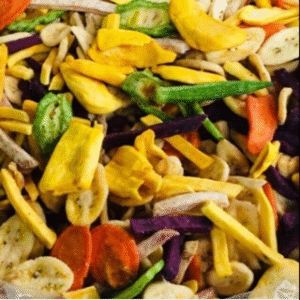Last updated on December 10th, 2024 at 01:48 pm
Introduction
Vietnam is one of the world’s largest coffee producers, and importing Vietnamese roasted coffee is a great business opportunity for coffee retailers, cafes, and wholesalers. With its distinctive flavors and rich history, Vietnamese coffee has made its mark in global markets.
In this guide, we’ll walk you through the process of importing roasted coffee beans from Vietnam. From choosing the right roasted coffee supplier wholesale to understanding logistics and quality assurance, this post provides everything you need to get started.
1. Understanding the Coffee Market in Vietnam
Before importing Vietnamese coffee, it’s crucial to understand the coffee market landscape in the country. Vietnam primarily produces Robusta beans, which account for around 40% of the world’s supply, making it a global leader in Robusta production. The Arabica variety, although smaller in volume, is also cultivated in specific regions of Vietnam.
Key Coffee Statistics:
| Coffee Variety | Percentage of Total Production | Main Regions in Vietnam |
|---|---|---|
| Robusta | 90% | Central Highlands (Dak Lak, Gia Lai) |
| Arabica | 10% | Northern Highlands (Lao Cai, Ha Giang) |
For more information on the difference between Robusta and Arabica, check out our detailed guide on Arabica vs. Robusta.

2. Choosing the Right Roasted Coffee Supplier Wholesale
Selecting the right roasted coffee supplier wholesale is one of the most important steps in the import process. You need a supplier who offers high-quality beans, reliable delivery, and competitive pricing.
When evaluating potential suppliers, consider the following factors:
- Roast Level: Whether you prefer light, medium, or dark roast, ensure the supplier offers the roast profiles that match your target market.
- Sustainability: Look for suppliers that implement sustainable farming practices, which is becoming increasingly important to consumers. Sustainable sourcing ensures ethical treatment of farmers and protects the environment.
- Certifications: Ensure that your supplier has certifications like Fair Trade or Rainforest Alliance if you’re aiming for eco-conscious markets.
Tips for Choosing the Right Supplier:
- Visit the supplier’s facilities (if possible) or request detailed information about their operations.
- Request samples to assess the quality of the coffee before making large orders.
- Check customer reviews or ask for references to gauge the supplier’s reliability.
Qualitex provides high-quality roasted coffee beans and sustainable sourcing. Explore our products through Qualitex’s coffee collection.
3. Understanding the Import Process and Legal Requirements
Once you’ve chosen a reliable supplier, it’s important to understand the import process. Vietnam’s coffee export industry is well-established, but you need to ensure compliance with your local regulations for importing food products.
Import Documentation Checklist:
- Import License: Ensure you have the necessary import permits from your country’s customs office.
- Certificates of Origin: The coffee supplier should provide this to verify the beans’ source.
- Health and Safety Certifications: Ensure the coffee is safe for consumption and meets food safety standards.
- Customs Duties: Be prepared for applicable tariffs and taxes that could affect the final cost.
Here’s a step-by-step process for importing Vietnamese coffee beans:
| Step | Process | Estimated Timeframe |
|---|---|---|
| 1 | Choose a supplier and confirm order | 1-2 weeks |
| 2 | Submit import documentation to customs | 2-4 weeks |
| 3 | Arrange shipment and delivery | 4-6 weeks |
| 4 | Receive and inspect goods | 1 week |
| 5 | Finalize payment and distribution | 1-2 weeks |
For more details on the logistics of importing coffee from Vietnam, check our guide on bulk importing Vietnamese coffee.

4. Packaging and Storage Considerations
Packaging plays a vital role in maintaining the freshness and flavor of roasted coffee beans. Coffee beans should be packed in airtight and moisture-resistant packaging to preserve their aroma and prevent spoilage.
Packaging Types:
| Packaging Type | Benefits | Best For |
|---|---|---|
| Vacuum-Sealed Bags | Preserves freshness, prevents oxidation | Long-term storage |
| Foil Bags | Protects beans from light and air | Retail coffee sales |
| Tin Tie Bags | Easy to seal and open, eco-friendly | Small batches, cafes |
Storage Tips for Coffee Beans:
- Cool, Dry Place: Store coffee beans in a dark, dry place away from sunlight and heat.
- Avoid Refrigeration: Do not store coffee in the fridge as it can absorb moisture and odors.
- Use Airtight Containers: After opening the original packaging, transfer beans to airtight containers to maintain freshness.
For tips on how to store your instant coffee properly, check our guide on How to Store Instant Coffee for Maximum Shelf Life.
5. Quality Control and Ensuring Freshness
The final step in the process is ensuring the quality and freshness of the coffee once it arrives. Coffee beans lose their optimal flavor if not stored or handled properly.
Freshness Maintenance Tips:
- Inspect beans upon arrival: Check for any signs of damage or over-roasting during transport.
- Test samples: Brew a cup of coffee using beans from the shipment to ensure the quality meets your expectations.
- Store in optimal conditions: As mentioned earlier, store coffee beans in airtight containers in a cool, dry place.
To ensure that you receive the freshest coffee beans, contact Qualitex for premium roasted coffee sourced from Vietnam’s finest farms.
FAQ Section
1. What are the best coffee beans to import from Vietnam?
Vietnam is known for its Robusta beans, which are perfect for espresso blends and strong coffee. Arabica beans from Vietnam also offer a smoother flavor profile.
2. How do I choose the right roasted coffee supplier?
Choose a supplier with a proven track record, certifications, and the ability to offer freshly roasted coffee beans with a consistent flavor profile.
3. What are the import duties on Vietnamese coffee?
Import duties depend on your country’s regulations. Be sure to check with your local customs office for the latest tariff information.
4. Can I store roasted coffee beans long-term?
Yes, you can store roasted coffee beans for several weeks if stored in airtight containers in a cool, dry place. However, to maintain peak freshness, it’s best to use the beans within 2-3 weeks of opening.
Conclusion
Importing Vietnamese roasted coffee for your business can be a rewarding venture, offering access to premium beans and high-quality coffee. By following the steps outlined in this guide, you can ensure you’re sourcing fresh and authentic beans that will satisfy your customers’ tastes. Whether you’re looking for Robusta or Arabica, Qualitex offers the best selection of roasted coffee sourced directly from Vietnam’s renowned coffee-growing regions.
Contact Qualitex today to get started on importing premium roasted coffee beans for your business.








